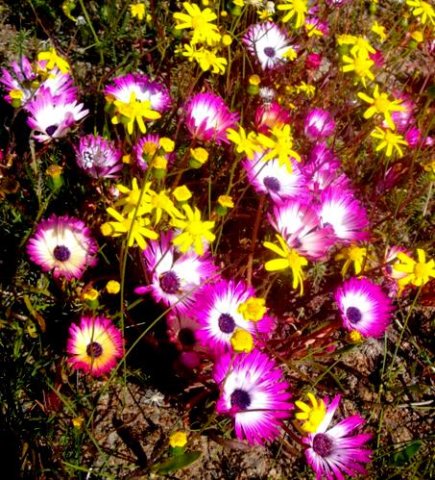Cleretum clavatum

Author: Ivan Lätti
Photographer: Ivan Lätti
Cleretum clavatum, commonly the salt sandfig and in Afrikaans bokbaaivygie (as several other cleretums), previously scientifically Dorotheanthus clavatus and before that D. gramineus, is a tufted, sprawling annual not exceeding 10 cm in height.
The dwarf plant has narrow, succulent, unlobed leaves with glistening water cells on stems and leaves. The earlier specific name, gramineus, is a Latin word meaning grassy, referring to the somewhat upright, curving leaves. Clava is another Latin word meaning club, probably referring to the slightly thickened or club-shaped leaf tips.
The large flowers are borne solitary from leaf axils or at stem-tips. The variously coloured petals are usually paler or white in their lower halves. The petals grow in two whorls, spreading in the morning and closing before dark. The numerous anthers in the flower centre are dark orange-brown when ripe. Flowering happens late in winter and early in spring. The fruits have five locules.
The distribution is limited to the far southwest of the Western Cape from Hopefield to the Cape Flats. The photo was taken in the Tinie Versfeld Wildflower Reserve at the end of August.
The habitat is seasonally moist renosterveld and fynbos on sandy flats, sometimes granitic soils. The species is considered to be threatened in its habitat due to habitat loss from urbanisation, agriculture and alien plant invasion (Smith, et al, 1998; Bond and Goldblatt, 1984; iNaturalist; http://redlist.sanbi.org).

